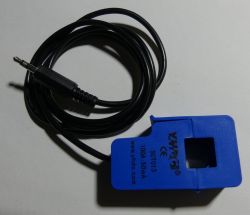The split-core current transformer shown in the photo is available at a low price on many auction portals and online stores. The transformer has the parameters of 100A / 50mA. So when 100A alternating current flows through the cable through the transformer, the AC milliammeter at the transformer output will show 50mA. The current ratio of the transformer is 2000. The output signal is led out on a mini jack connector. The transformer casing enables the core to be opened and the conductor to be measured is enclosed.
To begin with, we connect a 140W 230V bulb, a current of 0.66A flows in the circuit, the milliammeter shows 0.31mA.
According to the transmission 2000, a current of 0.62A should flow in the tested circuit. The multimeter shows 0.66A, however the measuring range is very large (100A) and measurement errors will always occur. Here more about the transformers and available models:
https://www.poweruc.pl/collections/split-core...urrent-transformer-sct013-rated-input-5a-100a
http://en.yhdc.com/product1311.html?productId=401
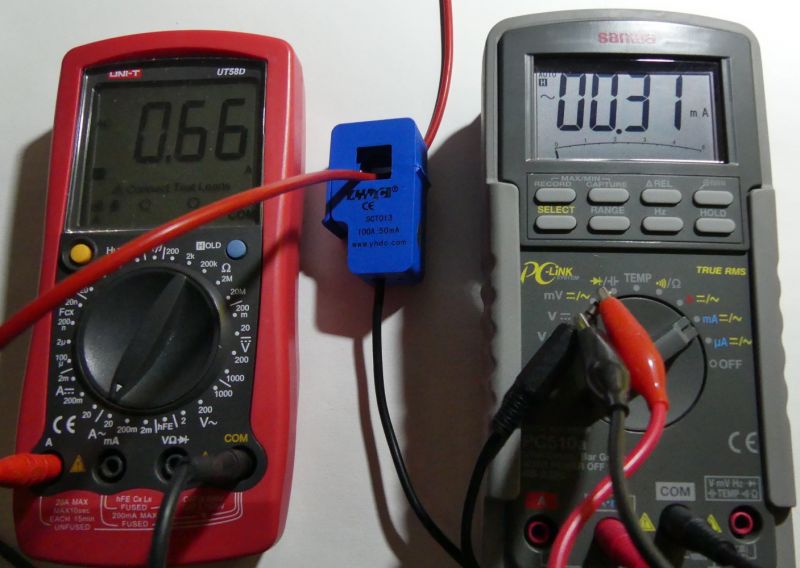
By checking the measurement results at several points, you can see the linear characteristics of the transformer:
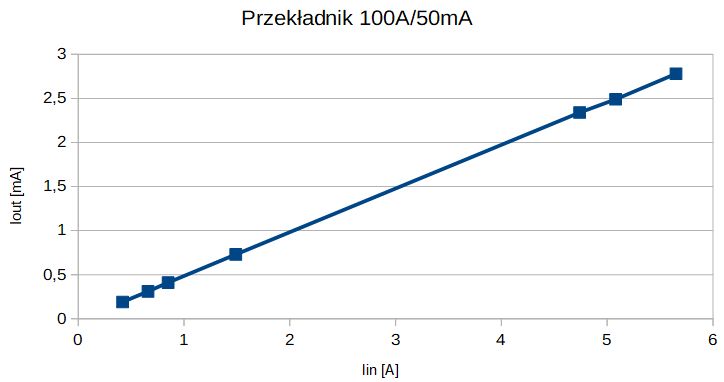
For the measurement of smaller currents, it is worth using a transformer with a smaller measuring range. For the test, we put 5 turns on the transformer core, which changes the ratio and output currents,

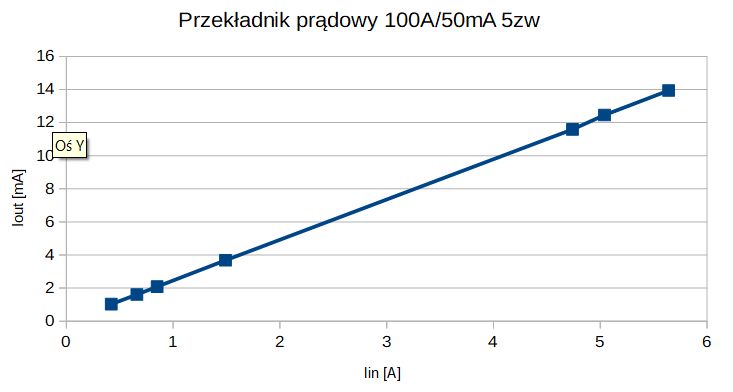
Another type of transformers are those with the output voltage depending on the current flowing in the tested line.
An example of a 30A / 1V transformer. A separate description of the transformer here SCT013 30A / 1V . The input current in A divided by 30 should produce the corresponding output voltage in V.
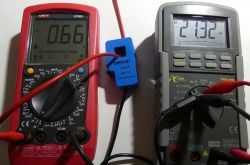
Alternating current of 0.66A causes the appearance of a voltage of 21.32mV at the output.
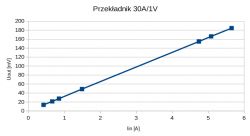
By recording the output voltage of the transformer, we can, for example, examine the current consumption in the home electrical installation.
What applications do you see for cheap transformers with limited measuring accuracy?

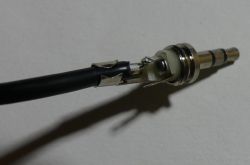
The transformer can be transformed into a primitive oscilloscope probe for observing the waveform of current changes.
Below is the shape of the current consumed from the network by a 100W bulb and a 13W LED:
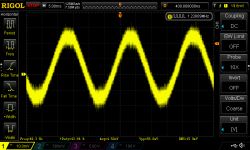

Inrush currents of, for example, different types of light sources can be observed:
The simultaneous recording of the voltage and current waveform allows to determine the received active and reactive power,
examples of differences between power supplies with and without APFC:
To begin with, we connect a 140W 230V bulb, a current of 0.66A flows in the circuit, the milliammeter shows 0.31mA.
According to the transmission 2000, a current of 0.62A should flow in the tested circuit. The multimeter shows 0.66A, however the measuring range is very large (100A) and measurement errors will always occur. Here more about the transformers and available models:
https://www.poweruc.pl/collections/split-core...urrent-transformer-sct013-rated-input-5a-100a
http://en.yhdc.com/product1311.html?productId=401

By checking the measurement results at several points, you can see the linear characteristics of the transformer:

| Iin [A] | Iout [mA] | x2000 |
| 0.42 | 0.19 | 0.38 |
| 0.66 | 0.31 | 0.62 |
| 0.85 | 0.41 | 0.82 |
| 1.49 | 0.73 | 1.46 |
| 4.74 | 2.34 | 4.68 |
| 5.08 | 2.49 | 4.98 |
| 5.65 | 2.78 | 5.56 |
For the measurement of smaller currents, it is worth using a transformer with a smaller measuring range. For the test, we put 5 turns on the transformer core, which changes the ratio and output currents,


| Iin [A] | Iout [mA] | x400 |
| 0.42 | 1.03 | 0.41 |
| 0.66 | 1.61 | 0.64 |
| 0.85 | 2.09 | 0.84 |
| 1.49 | 3.68 | 1.47 |
| 4.74 | 11.59 | 4.64 |
| 5.04 | 12.46 | 4.98 |
| 5.64 | 13.94 | 5.58 |
Another type of transformers are those with the output voltage depending on the current flowing in the tested line.
An example of a 30A / 1V transformer. A separate description of the transformer here SCT013 30A / 1V . The input current in A divided by 30 should produce the corresponding output voltage in V.

Alternating current of 0.66A causes the appearance of a voltage of 21.32mV at the output.

| Iin [A] | Uout [mV] | x30 |
| 0.42 | 13.64 | 0.41 |
| 0.66 | 21.32 | 0.64 |
| 0.85 | 27.52 | 0.83 |
| 1.49 | 48.8 | 1.46 |
| 4.74 | 154.7 | 4.64 |
| 5.08 | 166.1 | 4.98 |
| 5.65 | 184.5 | 5.54 |
By recording the output voltage of the transformer, we can, for example, examine the current consumption in the home electrical installation.
What applications do you see for cheap transformers with limited measuring accuracy?


The transformer can be transformed into a primitive oscilloscope probe for observing the waveform of current changes.
Below is the shape of the current consumed from the network by a 100W bulb and a 13W LED:


Inrush currents of, for example, different types of light sources can be observed:
The simultaneous recording of the voltage and current waveform allows to determine the received active and reactive power,
examples of differences between power supplies with and without APFC:
Cool? Ranking DIY







